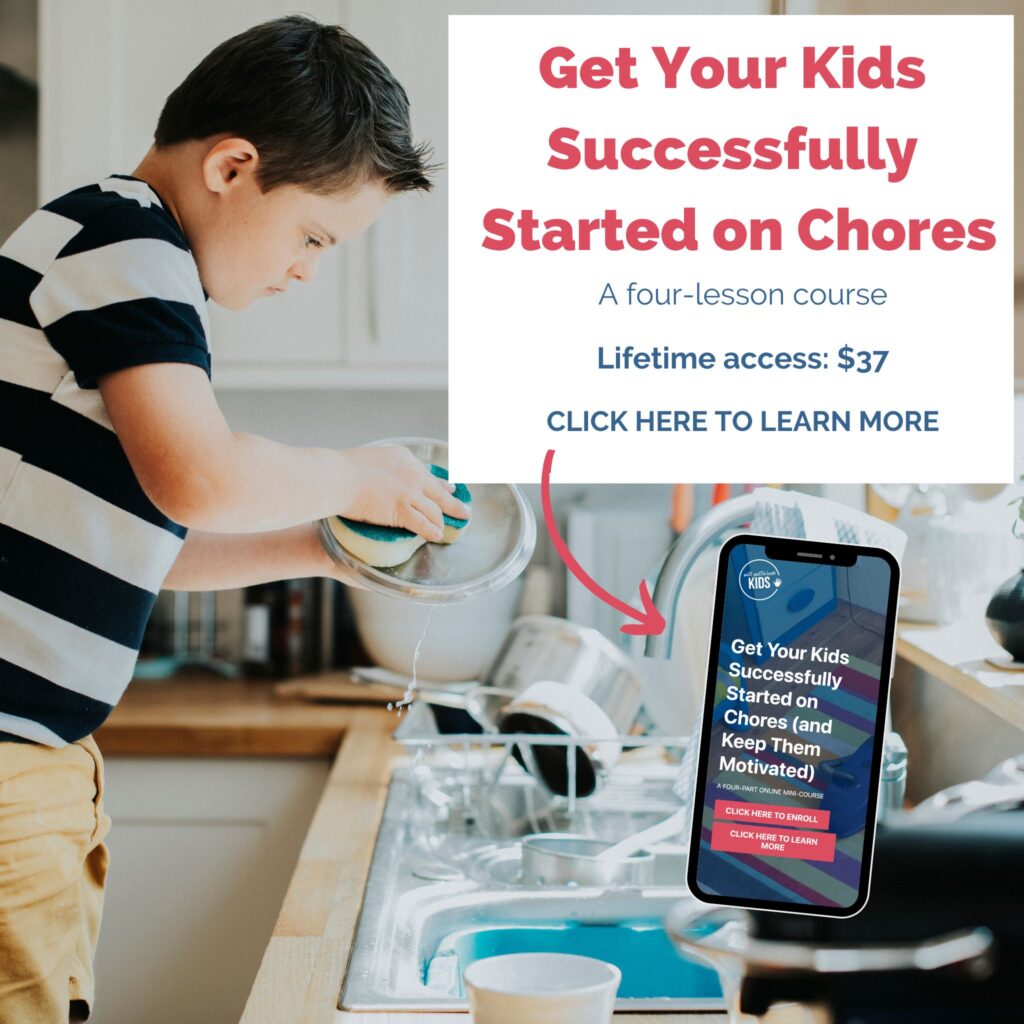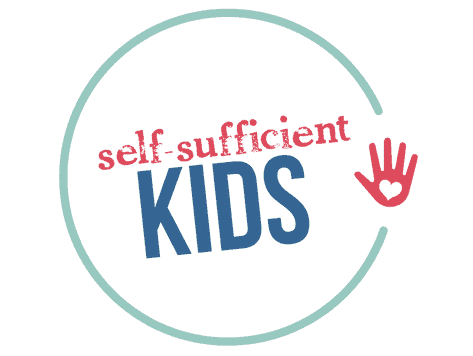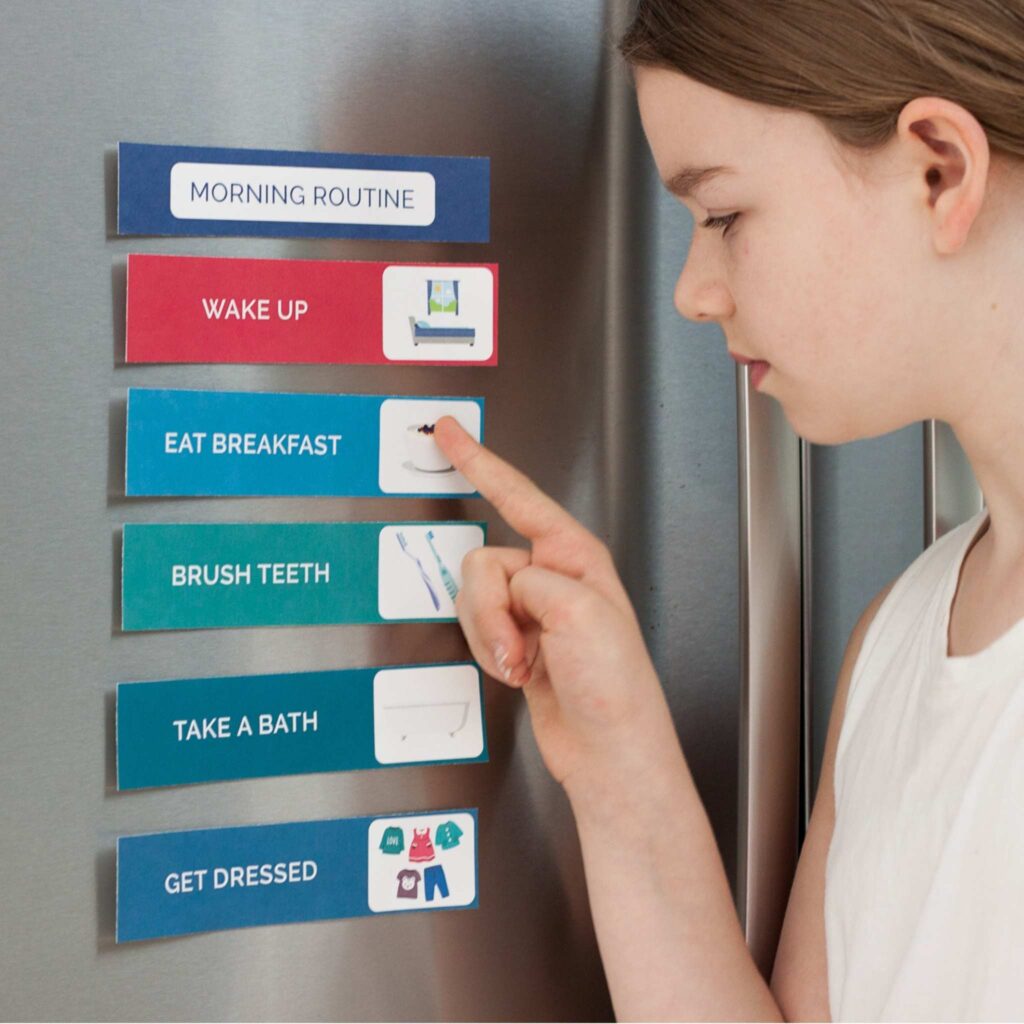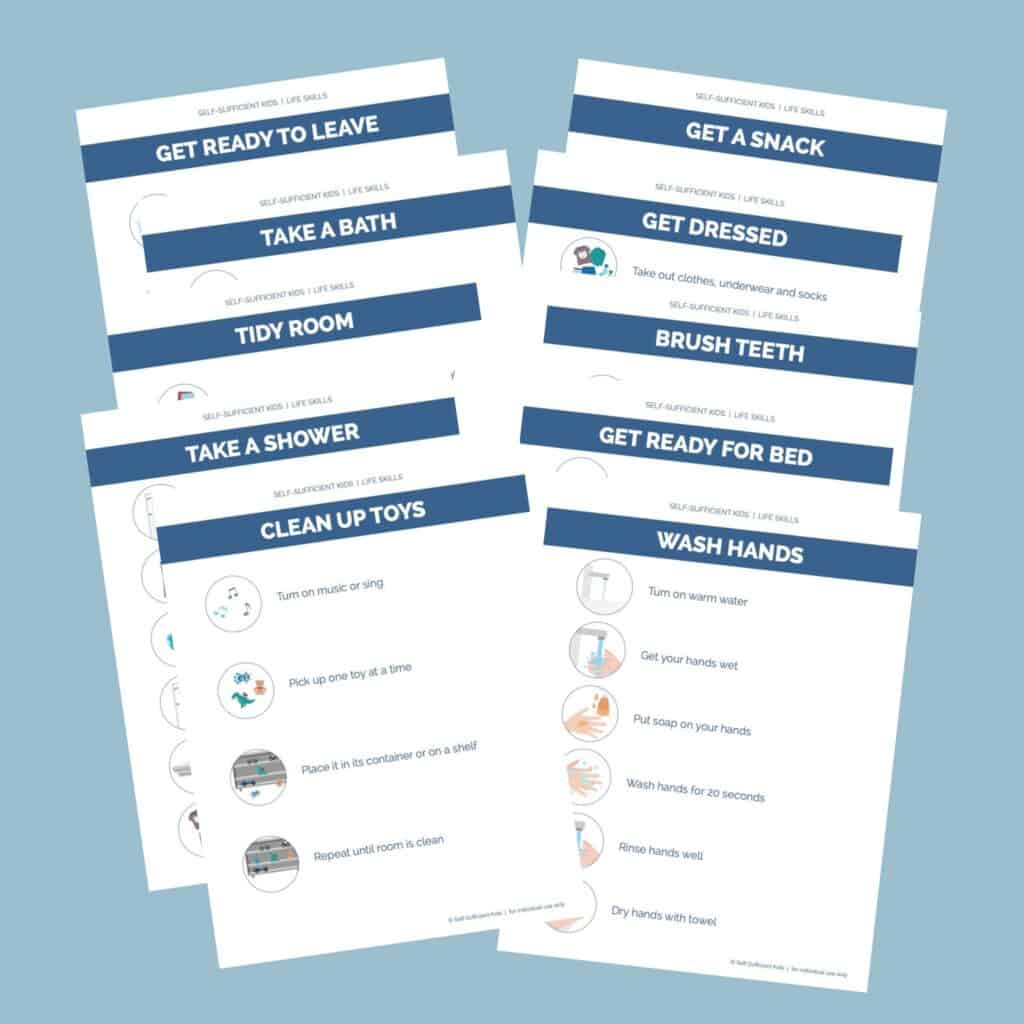10 Parenting Practices That Pay Big Dividends When Kids Are Older
Start these child-rearing practices when your kids are young to make life with adolescents and teens easier.

(This post contains affiliate links. If you click on a link and make a purchase, I’ll receive a commission at no extra cost to you.)
Hindsight is 20/20, isn’t it?
As a new mother, I had no idea what kind of parenting would pay off in the long run.
Like most parents, I read and received a lot of advice. But, I wondered, which parenting practices would have an impact and which would I find unnecessary?
Now that I’m twelve years into being a parent, I can say with certainty that a few suggestions I followed when my kids were young have paid off – despite sometimes being challenging at the time.
There’s no question that some parenting practices are simply easier to begin when kids are little. Young kids are eager to learn and aren’t too set in their ways. As these kids grow up, they’ll be less likely to question what’s been standard practice in their family for many years.
Parenting Practices You’ll be Glad You Started When Your Kids Were Young
I didn’t do everything perfectly when my kids were little. In some areas, I wish I had done much better. But listed below are ten parenting practices I learned about and embraced when my kids were young that have made a big difference over the years to both them and our relationship:
Learn how to talk (and listen) to your kids
Learning to communicate with my young kids in a way that minimized shouting matches and all-out wars made a huge difference in our relationship.
Talking to and listening to my children in a productive way wasn’t something that came naturally to me at first. But once I read the book How to Talk so Kids Will Listen, Listen so That Kids Will Talk and put the authors’ ideas into practice, my ability to communicate with my girls gradually improved.
After reading the book, I realized that listening to and asking my kids questions about their emotions can calm just about any storm. And due to these listening techniques, my girls seem to know that I’m on their side even if we don’t readily agree on the issue at hand.
That’s not to say that my kids listen perfectly to everything I tell them and sometimes we disagree. But we now have a better sense of how to communicate with each other – including when we’re feeling frustrated or emotional.
Stick to a routine
Research shows that getting kids into a daily routine can work wonders for their temperament, anxiety, and can even help them get to sleep at night.
That last issue – getting to kids to sleep – is the reason we began a routine when my firstborn was an infant.
As a new mother, the last thing I wanted to do was to be tied down to a schedule. But in order to get my daughter to sleep, the advice I received was to begin a routine with her. This would help give her cues throughout the day, I was told, including when it was time to go to bed.
It was a struggle those first few weeks. It took discipline to have my daughter go down for a nap at exactly 10 am every morning and take her bath every evening right at 6:30 pm.
After a few weeks, however, we got into a rhythm and bedtime was no longer an issue. But what I also discovered was that our days were simply easier. My daughter knew what to expect, so transitions from one activity to the next were not as much of a problem as they had been.
The result was a more peaceful and less stressful life. Which also led to me feeling more relaxed about parenthood in general.
Our routine has become a lot more flexible over the years. But I’ve found that following a schedule throughout the day is still beneficial, even with older kids. And since they’ve been accustomed to schedules since they were young, it’s rarely a problem to stick to one.
Bedtimes, homework, doing chores, getting ready for school, and taking part in our monthly cleaning day are examples of activities my older kids expect as part of our routine.
Calm your crazy mornings (and afternoons, and evenings!) with these routine cards for kids. These cards allow kids to independently check what they need to do and in what order – so you don’t have to remind them! Click here or the image below to learn more.
Keep to an early bedtime
In the same vein of keeping to a schedule, I’m grateful we set an early bedtime for our kids when they were young and have continued it through their adolescence.
An early bedtime just made sense to our family life, but additionally, over the years, I’ve discovered a multitude of studies that document how important sleep is for children and teens.
These studies show that early bedtimes benefit kids’ physical, emotional, and cognitive development. Kids with early bedtimes are also shown to be less irritable, more able to focus in school, and less likely to be obese later in life.
You may be wondering why an early bedtime makes the difference? For one thing, more restorative sleep happens earlier in the evening, meaning kids (and adults) feel more well-rested when they go to bed early.
But studies also show that kids with later bedtimes take longer to fall asleep than kids who go to sleep earlier. Kids with later bedtimes also tend to wake up more frequently in the middle of the night and don’t sleep late enough to make up for their deficit. (See recommended sleep times here)
And let’s not forget the benefits parents receive from kids’ early bedtime – more time to unwind and relax in the evening without kids. This isn’t something to overlook or dismiss. Taking care of young children is emotionally taxing and having time to unwind can help us be better parents when our kids are awake.
Help guide your young child through everyday tasks with these Simple Directions for Young Children Cards. Each card serves as a reminder of how to carry out a task and allows children to eventually take on tasks independently. Click here to learn more.
Begin kids chores when they’re young
Although I began chores with my kids when they were relatively young (ages 5 and 7), I now wish I’d begun even earlier.
That’s because the best time to start chores is at the toddler or preschool stage. Kids in these age groups have a natural instinct to want to help, making it the best time in a child’s life to set the precedent of helping out around the family home.
Getting kids started on chores at this age can be as simple as encouraging them to help fold laundry or wipe a table. They probably won’t perform tasks well, but the point is to begin to nurture that helping instinct. (For more tips about getting started on toddler chores click here.)
You’ll be happy you did. By the time kids are in elementary school, helping out around the home will be natural to them. And not only will you have the benefit of extra helping hands around the house, but research shows that chores also offer kids many other benefits, including improved relationships and better success in academics.
Interested in getting your kids started on chores? My four-lesson course will teach you how to get started, avoid nagging & power struggles, and keep your kids motivated. Click here or the image below to learn more.

Read books together
Over the years of being a parent, I discovered that the simple act of reading books to my young kids benefited them both in the moment and as they grew older.
Most parents know that ample evidence shows reading to young children (even infants) helps them learn to speak and read independently.
But there are other benefits of reading to young kids that you may not be aware of. These include providing time to bond with your child and teaching kids lessons and values that aren’t easily taught by simply having a discussion.
Whenever parents read to their children – even older children who already know how to read – it makes them feel loved and special. These warm feelings bond us to our children and they’re memories kids carry with them as they grow and mature.
And also by reading select books to our children, parents have an opportunity to pass on values and teach important lessons. Kids are more likely to grasp these values when they are shared through stories, especially if those stories contain other children that they can relate to.
To find the perfect book, see my lists of children’s books, organized by theme, here.
Allow your child to be independent
As my kids have grown, I’ve become increasingly aware of how allowing them a certain level of independence adds to their confidence and self-esteem.
But allowing my kids to be independent didn’t come easily at first. It’s often so much easier to do things for our kids and be in control.
For example, when they were young, I’d pick up a mess my girls had made knowing I could do it better and faster. And once school began, there were many mornings when I could be found packing my daughters’ backpacks even though they could do it themselves.
Encouraging kids independence can come in many forms such as letting your toddler choose their own outfit (no matter how uncoordinated) or attempt to tie their own shoes (even if it takes an eternity to complete).
It can also mean letting kids express their own opinions and take risks (within reason).
Letting go and encouraging kids to be independent isn’t easy. But in the end, not only will your child benefit from feeling more empowered and responsible, but once kids reach another stage of independence, it means less work for you too.
See related:
- 9 Ways to Encourage Self-Sufficiency in Young Kids
- 7 Ways Parents Can Encourage Self-Sufficiency in Teens
Let kids know it’s OK to fail
Because we live in a society where failure is generally seen as unacceptable, normalizing failure is something I’ve found to be an ongoing challenge with my kids at every age.
Showing kids that failure is something everyone experiences helps kids develop a growth mindset — or rather, the ability to perceive failure as something that one can learn from instead of a personal inadequacy that can’t be overcome. Research shows that a growth mindset typically leads to more success in relationships, sports, academics and later in one’s chosen profession.
While young kids rarely experience the type of failure older kids do, they’re still susceptible to seeing small mistakes or struggles as a sign that they’ve failed.
Little ways parents of young kids can normalize failure is by brushing off these small mistakes – such as spilled milk or a cap left off a marker – for what they are: not failures of the child but accidents that aren’t a big deal.
And when a child struggles to button up a shirt or put together a puzzle and expresses frustration, talk to him about how feeling frustrated is normal. You could also make a suggestion to put aside the task for a little while and try again later. The point is to encourage kids to keep trying despite feeling like a failure in the moment.
Getting into the habit of normalizing failure when my kids were young helped when sports and academics came into the mix and they began to experience “real” failures.
Few kids or even adults ever achieve a perfect growth mindset, but getting kids in the habit of not viewing failure as a catastrophe can help.
See related: How to Help Children Deal With Failure
Let feelings be
It’s easy to fall into a trap of thinking we need to “fix” our kids’ emotions – whether that be sadness, disappointment, or a full-on tantrum. I know I fell into this trap early on. It was stressful to believe I was responsible for managing another person’s feelings.
But eventually, I learned that simply letting my kids’ feelings be was not only better for them but also for me.
By trying to fix my kids’ emotions I was inadvertently sending the message that some feelings are “bad” and need to change.
That doesn’t mean I now ignore their feelings. Everyone feels frustrated and sad at some point and needs sympathy, consoling and encouragement. Instead, I try to help my kids better understand what they are feeling so they can learn to deal with their emotions on their own.
This process of letting feelings be is ongoing but I’m glad I stumbled upon this child-rearing practice early on.
Let go of perceived judgment of others
One of the worst ways to parent our children is to be guided by the perceived judgment of others. Assuming you’re a conscientious parent already, letting that judgment creep into your thinking rarely benefits your kids.
The truth is, you know your children better than anyone. And the more you can quiet those voices – the ones that tell you you’re not good enough or others know better – the more you’ll be lead to make decisions based on what’s best for your kids, not for show.
I remember when my oldest daughter was three, she was determined to pick out her own clothes. The only problem? She’d choose to put on a clashing plaid shirt with a floral printed skirt – not exactly the outfit I’d pick out.
Often I’d make her change. But why? Now looking back years later, I realize it’s because I was afraid that other parents and adults would think I didn’t have my act together, and that allowing my daughter to go out in public in such a jarring mix of patterns was an indicator.
And yet, this was her way to begin to express her individuality. To let her own light shine.
Eventually, I just went with the flow and let her wear whatever she wanted (within reason). Somewhere along the way I realized that continuing to force her to change, I’d be undermining her independence and growing sense of self.
Clothing is just a small example of how the perceived judgment of others can cause our parenting to go astray. As kids get older, we could be misdirected to push our kids into athletics they don’t want to do or push them academically in ways that feel uncomfortable to them.
These fears only intensify as children move into adolescence and beyond. So it’s best to learn to let go of these perceived judgments as early as possible.
Make eating healthy food normal
I love vegetables. And when my first daughter began eating solid foods I was determined that she would, too.
To accomplish this, I opted to make my own baby food. Before she turned one, my daughter ate real pureed beets, green beans, carrots, broccoli, red peppers, and squash. The only time she ate jarred foods was when we were traveling.
By eating unadulterated vegetables, as opposed to those sweetened with fruit as most store-bought ones are, both of my girls didn’t think twice about eating them as they grew older.
Today both eat a wide range of vegetables and foods in general which I suspect was the result of eating real foods from the start.
You may also be interested in:
- What Kids Really Need to Be Confident, Independent, and Self-Reliant
- Encouraging a Growth Mindset in Kids: Resources for Parents
- How to Raise Responsible Kids – Not Just Obedient Ones
- 8 Ways to Raise an Independent Child While Still Maintaining a Strong Bond
What to do next…
1. Subscribe to Self-Sufficient Kids’ email list.
Like what you read here and want to learn more? Every Thursday I’ll send you one parenting tip about raising self-sufficient kids and creating the peaceful relationship you yearn to have with your child. Click here to sign up.
2. Take one of my quizzes!
Find out if you’re raising a self-sufficient kid (click here) or if you’re doing too much for your kids (click here). At the end of each quiz, you’ll be asked to provide your email address to see the results.
3. Get your kids started on chores.
Learn how to get your child started on chores (& keep them motivated + avoid power struggles) by enrolling in my Get Your Kids Successfully Started on Chores course. Click here to learn more and sign up.

About Kerry Flatley
Hi! I’m Kerry, the mother of two girls and a certified parent educator. I believe it is possible for parents to have a supportive, loving, and warm relationship with their kids while raising them to be independent and ultimately self-sufficient. Over the years, I’ve read numerous books and articles that support this belief and I’ve put these ideas into practice with my own kids. Read more about me and Self-Sufficient Kids here.




